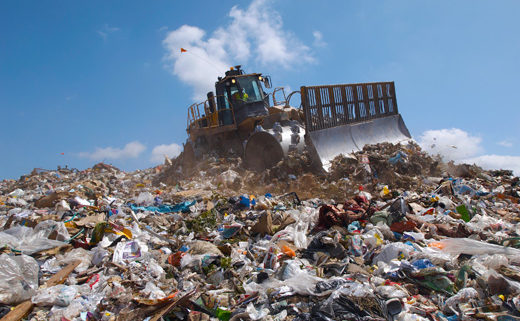Meet some of the world’s biggest landfill sites…
At MBA Polymers, we’re committed to diverting plastic waste from landfill, where it remains for hundreds of years, polluting the environment. Currently, just 10% of the plastic produced in the world is recycled, so there is significant scope for countries to expand their recycling infrastructure and build large-scale, resilient recycling markets. We’re helping to drive this change by developing high-tech processing plants to transform post-consumer plastics into valuable raw materials for new products.
Finding viable alternatives to landfill will become increasingly important as the existing sites become full and governments incentivise greener forms of waste management.
Here, we look at some of the world’s largest and most polluting landfill sites, past and present, and explore how they’re being used, as well as their effect on the environment.
Packington, UK
The Packington Landfill outside Birmingham is one of the UK’s biggest landfill sites. It’s technically a ‘land raise’, as it forms a towering hill of waste in the countryside, rather than being hidden underground. Packington takes rubbish from Birmingham and Warwickshire but has previously accepted waste from locations including London and Glasgow. Today, Packington covers around 380 acres of former grassland with more than 19m tonnes of waste. Once it is full, it will be covered with a non-permeable layer of clay or plastic, followed by a layer of soil, in which grass will be planted. Some 15 miles of underground pipework siphon away the methane gas produced by to generate electricity.
Puente Hills, US
Puente Hills Landfill, one of the largest landfills in the US, holds 127 million tonnes of waste, and at the time of its closure in 2013, it still had 10m tonnes of capacity. The site had been in operation since 1957. It covers 700 acres and some of the rubbish is buried up to 150 metres deep. As at Packington, the methane gas is funnelled away to create energy (at the Puente Hills Gas-to-Energy Facility), and will continue to do so for some time, as the waste continues to decompose.
Olusosun, Nigeria
The Olusosun Landfill is a 100-acre dump in Lagos, Nigeria and is the largest landfill in Africa. It rises up 25 metres in places, and extends 35 metres underground. The site receives up to 10,000 tonnes of rubbish daily, together with waste from container ships, largely e-waste. As people scramble to extract the precious metals from the electronic waste through burning, the chemicals they use result in the release of toxic fumes. Indeed, thousands of people live in shanty towns around the site, scavenging for scrap to sell. As the city of Lagos has expanded, commercial and residential areas have moved closer and closer to the site.
There are plans afoot to harness the methane from the site to supply a small proportion (1%) of the energy required for Lagos’ 21m residents, many of whom currently use diesel generators to power their homes when the mains electricity supply falters.
Jardim Gramacho, Brazil
Jardim Gramacho (‘Jardim’ means ‘garden’, in Brazilian Portuguese) was established on the ecologically sensitive wetlands of Guanabara Bay in the 1970s. It operated for more than 30 years before closing in 2012, receiving up to 9,000 tonnes of waste per day. The site is estimated to contain some 60m tonnes of rubbish and spreads out over more than 300 acres. Rubbish pickers combed the site for scrap to sell, even forming an ‘association’ of collectors, or ‘catadores’. In 2010, a film entitled ‘Waste Land’ covered the story of a Brazilian artist, Vik Muniz, who created art with the help of Jardim’s rubbish collectors.
The open air site, also known as ‘Trash Mountain’, has caused significant environmental concerns over the years, on account of both the greenhouse gases released to the air and the toxic residues leaking into the sea. The Brazilian government announced ahead of the Rio+20 conference that the site would be replaced by a modern recycling plant.
Sulaibiya, Kuwait
The Sulaibiya area of Kuwait City is home to the biggest tyre landfill on Earth. It can even be seen from space. Gigantic holes are dug from the sandy earth and filled with old tyres, now numbering more than seven million. Sending used tyres to landfill is now illegal in the UK, but other countries outside of Europe, including Kuwait, can pay for tyres to be taken away. In 2012, a fire broke out in the Kuwait tyre dump – also visible from space – in which five million tyres burnt uncontrollably, releasing smoke and toxic chemicals into the air.
To learn more about MBA Polymers and our work to divert plastic waste from landfill, please visit our website.

